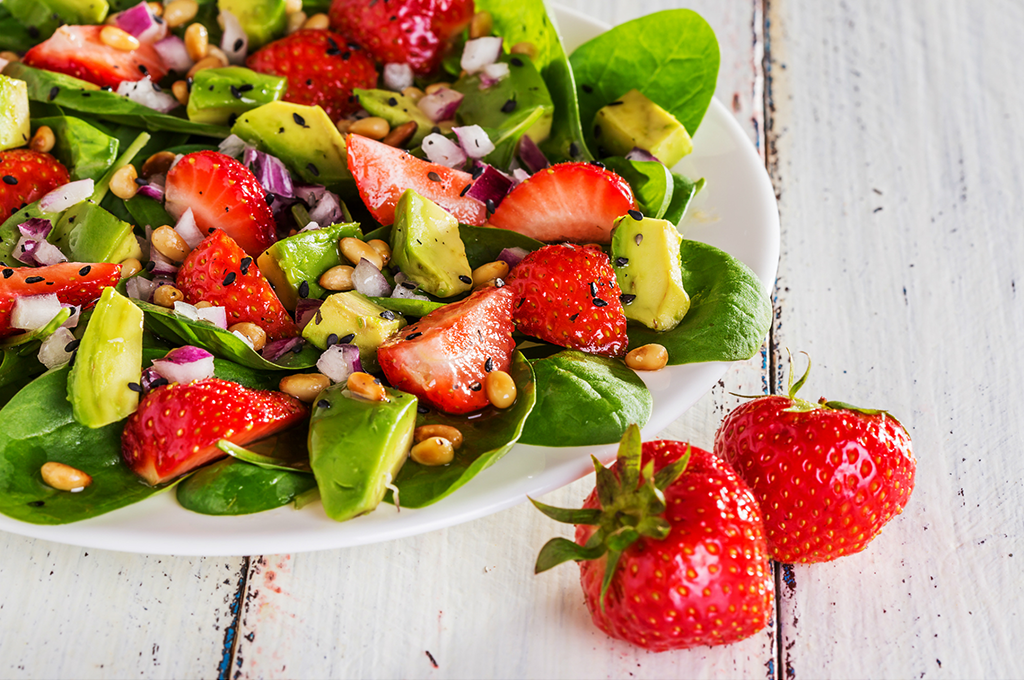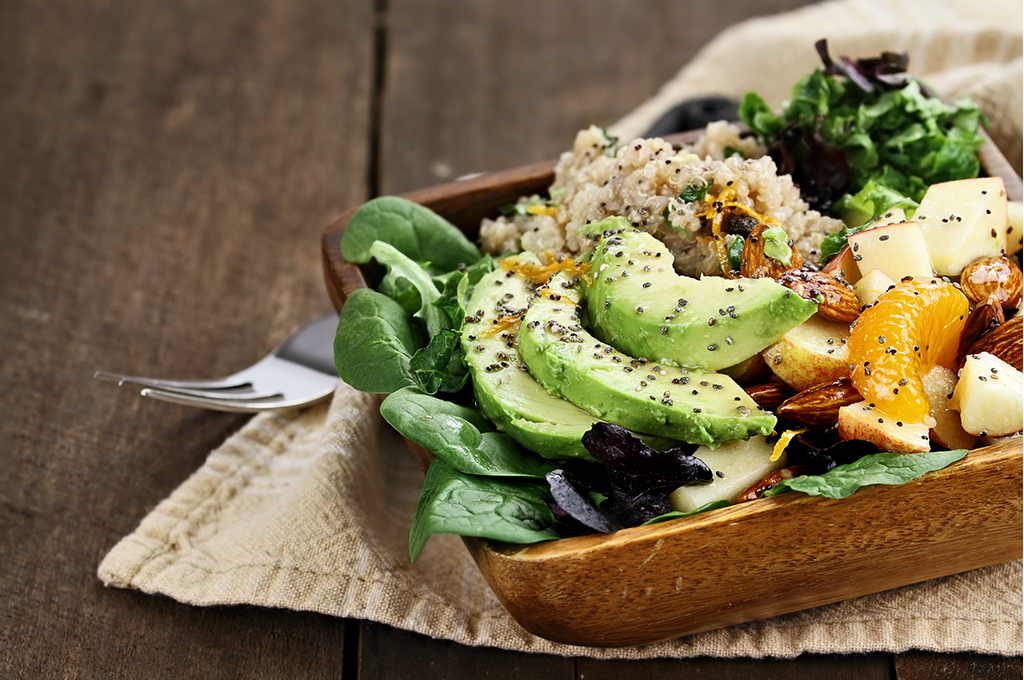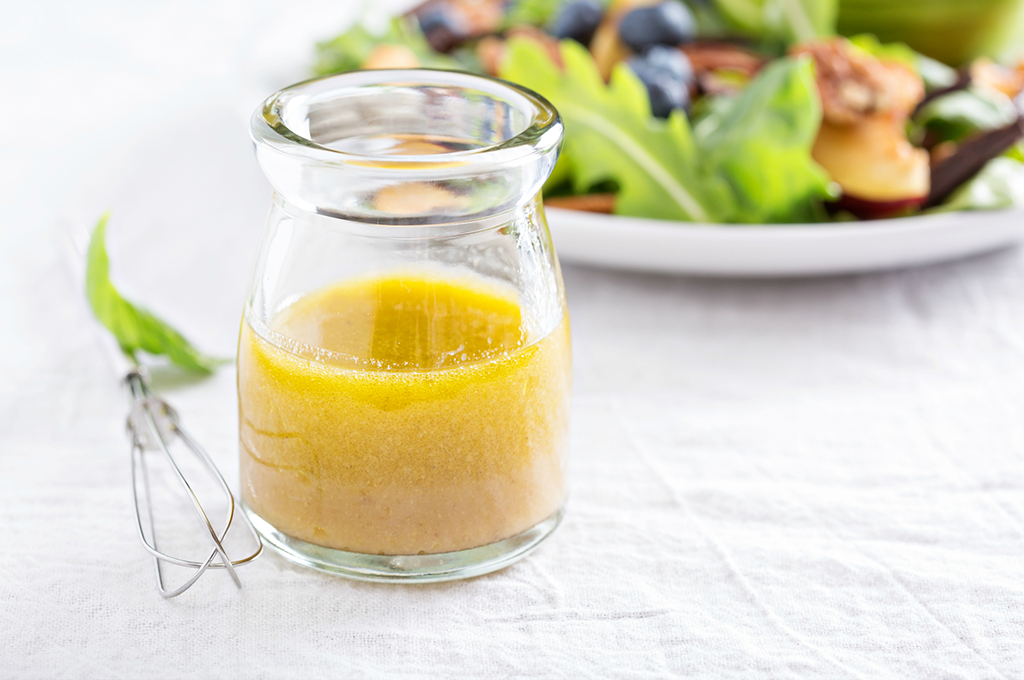
eat
Filling salads are bursting with flavor, variety and, of course, they’re good for you.
A large plate bursting with colorful plants and topped with a zingy vinaigrette—a big salad—has been part of my regular dinner repertoire for years. Happily, this concept is finally getting the love it deserves as a result of today's increased focus on plant-based diets. Forget the naked salads of the 1980s, cruelly deprived of dressing. Follow these five tips and get creative to make salad the star of tonight's supper.
Build Your Base: Salad greens, your way
Begin building your salad base. Lettuces are low in calories, so you can pile them on; their fiber and water content will help you to feel full. Greens are also loaded with vitamins, minerals and phytonutrients (health-promoting plant chemicals). Ditch iceberg, which lacks the bright flavors and myriad nutrients of other greens. There are so many fabulous lettuces out there—why not give some new ones a shot?
Romaine is a good starter, but there's also spinach, arugula, mesclun, red leaf and beyond. Include cancer-fighting crucifers, too, like cabbage or kale, or fresh herbs. What's in season? What works for you? Make it your own.
Top With Veggies: Go for variety, color
You've got your salad base; now paint your palette with whatever veggies your heart desires. My salads feature whatever I have on hand: carrots, radishes, peppers, avocado, tomatoes, beets, sprouts, olives, artichokes, Brussels sprouts, onions… whatever. If you can find local veggies in season, your taste buds will thank you.
Personally, I'm obsessed with watermelon radishes and romanescu broccoli (aka, Roman cauliflower)—and don't even get me started on sugar-sweet gold cherry tomatoes, which, arrive in August (I pop into my mouth like candy). Variety and color are key: The more varied and brilliantly hued your veggies, the more nutrients you're getting. (And, just for the record, while low-sugar veggies should appear most often on your salads, many big salads are wonderful with fresh fruits like citrus, pears, pomegranate and berries.)

Add Protein Power: Beans, pulses, legumes
It's time to turn to the satiating power of protein. After all, you don't want to finish your big salad still hungry and order a pizza. Most people jump to chicken, shrimp and steak to liven up their salads. As long as the meat doesn't become the leading player, perhaps that's what you'll first choose to get a big salad into your dinner repertoire.
Yet soybeans (and their products, like tofu), lentils, chickpeas, pinto beans and the like are small packages with big nutrition. They include protein, as well as fiber, B vitamins, iron, calcium and potassium. They're also low in calories and sodium—if you use canned, make sure to choose a no-salt brand—and are less pricey than animal protein.
Moreover, producing these plant foods is less taxing on our planet's precious natural resources, and many enhance soil quality through nitrogen fixation. There's a good reason it's the International Year of Pulses, and most of us don't eat the amount we should for optimal health.

Mix It Up: Toss in whole grains
Like pulses, whole grains are a nutritional powerhouse of vitamins, minerals and fiber—and even some protein—and create a pleasing texture and toothsome bite to your salad. Brown rice is a favorite of mine, especially when included with black beans for a big salad with a Tex-Mex twist. There are many different grains —think barley, quinoa, farro, oats and amaranth—to add intrigue to your salad; experiment to learn what you prefer.
Tossing whole grains into a big dinner salad is also a terrific way to use up last night's leftover rice or pasta, too. While whole grains aren't a regular addition to my salads, which tend be loaded up with veggies, beans and greens, a handful can make a tasty difference—especially if I'm having a craving for toasty homemade rye croutons.
Bring On The Fat: Salad dressing and toppings
It makes me sad when I think about everyone out there still shunning salad dressing, or opting for low-fat varieties, often packed with sugar. Yes, full-fat salad dressing is energy-dense: The main ingredient is oil, which has more than double the calories compared with carbs or protein (about 9 calories per gram versus 4).
So if you need to lose weight, you'll want to keep the calorie content of dressings in mind—and save sumptuous dressings like blue cheese and green goddess for special occasions.

Even so, science has shown clearly that certain types of fats are particularly beneficial to health. Diets rich in monounsaturated fats, like olives and olive oil, and polyunsaturated fats, like nuts, seeds and their oils, are both associated with decreased risk heart disease, especially when these foods supplant refined carbohydrates (like white bread, rice or pasta).
Moreover, the fat molecules in salad dressing help your body absorb the valuable (fat-soluble) nutrients in your meal. A drizzle of extra virgin olive oil and balsamic vinegar is my go-to dressing, but whipping up a simple vinaigrette at home is a cinch—try my maple-Dijon recipe—and can feature any combination of oil and vinegar that pleases. And, if your salad calls for crunch, scattering on a few nuts or seeds can take your big salad over the top.
Dinner's ready. Season with sea salt and freshly ground pepper to taste, and enjoy. Now is the perfect time to celebrate the power of plant-based diets, your way.
Copyright 2016 P.K. Newby via Zester Daily and Reuters Media Express